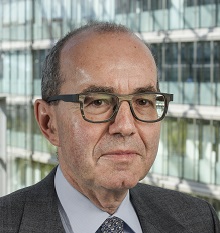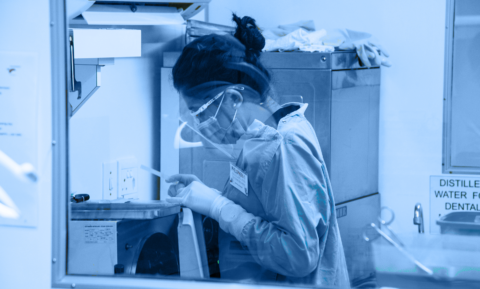This blog was first published on Devex on 10 October 2017
Almost 20 years ago, in 1998, 39 leading pharmaceutical companies sued the South African government to stop legislation on parallel imports and generic substitution. It was one of the dumbest things the industry ever did. What started as a technical legal battle became a public relations disaster of unprecedented magnitude for the industry. The lawsuit was framed in such a way that patents and prices were the main barriers to AIDS treatment, with an insensitive industry putting profits above lives. It took three years of pain and anguish before the companies reached an amicable settlement with Nelson Mandela’s South Africa, moved from confrontation to dialogue, and finally withdrew their case.
At the time of the settlement, in 2001, most experts considered the target of treating 3 million AIDS patients by 2005 with antiretroviral treatments —known as ARVs — as purely aspirational. Today, almost 20 million AIDS patients in developing countries are getting effective treatment against a once deadly disease.
Despite a global environment of war, terror, famine, mass migration, and chronic disease, on average, we are living longer and healthier lives, but still too many are left behind. Achieving universal health coverage by 2030 remains a daunting task. However, one reason to be optimistic is that relations between the industry, governments, and many stakeholders have been transformed.
We all now recognize, as Dr. Tedros, the World Health Organization director-general, said at the recent United Nations General Assembly, UHC is “a human right, not a privilege” — one denied to more than 400 million people. Yet, at the same time, progress has been made. In the 10 years from 2003-14, over 13 million more people gained access to ARVs to combat HIV/AIDS. The U.N. may well reach its goal of access to ARVs for at least 90 percent of all people infected with AIDS by 2020.
The end of that court case led immediately to major soul-searching among pharmaceutical companies. And the eventual settlement stated that the South African government and innovative pharmaceutical industry would work together to find solutions for tackling the epidemic — a precursor to what is the norm today. But, critically, it coincided with a declaration by the African Union countries in Abuja, Nigeria pledging to devote at least 15 percent of their budgets to health care.
What’s more, the U.N. set more than 100 ambitious targets for fighting — and defeating — the epidemic; and the Millennium Development Goals, supported by The Global Fund, gave a huge boost to existing and new partnerships to address many other fatal diseases, including malaria. Meanwhile, pharmaceutical research companies stepped up efforts to improve these people’s prospects through, for instance, donations, product development partnerships, partnerships to improve health system capacity, differential pricing, technology transfers, voluntary licensing, and other positive measures. A far cry from what happened just two decades ago.
No Icarus-like flights of fancy
We are now trying to achieve other ambitious goals, with the U.N.’s Sustainable Development Goals and targets, including UHC by 2030, only a dozen years away. But, while targets act as incentives, they are more often than not missed. While some countries have achieved the Abuja target of 15 percent 16 years later, resource-rich Nigeria hovers around 5 percent and others barely touch 3 percent. If health systems were as resilient as they should be, the Ebola epidemic of 2014-15 could have been averted.
The innovative pharmaceutical industry, through both new medicines and partnerships, is helping to move the compass needle. Companies are making discoveries to treat so-called neglected tropical diseases and are firmly on course to donate 14 billion treatments for NTDs over 10 years. This mass drug administration and donation program made its way earlier this year into the world records with over 200 million treatments donated in 24 hours. This is just a glimpse into the 300 or so innovative multi-stakeholder partnerships involving 1,000 international organizations, national governments, and local communities, as well as NGOs and research institutes.
But not everyone is living up to their commitments. A recent WHO study suggests that 85 percent of the funding gap to achieve UHC could be met by countries themselves, albeit 32 of the poorest would still require substantial overseas aid.
India devotes barely 4 percent of its GDP to health, even though it has a large, growing and acquisitive generic drugs industry. It is a scandal that this industry produces 55 percent of Gavi, the vaccine alliances’ vaccines, but only two-thirds of Indian children receive such protection. Clearly it is a matter of spending priorities.
Yes, we can
Our core business is innovation. What our researchers and clinical trial teams do every day is to keep on finding new treatments. Today, there are more than 7,000 under development. To boost research, we are collaborating more and more. The 10- 15-year discovery clock is ticking on over 62 research and development projects for tuberculosis now in various stages of development; four of these target multidrug-resistant TB and two novel antibiotics targeting MDR TB specifically are already proving effective. Beyond these discoveries, we are finding novel ways for countries to access them according to their ability to pay. For example, the Novartis Access initiative has committed to offer over 30 governments, NGOs, and other institutional customers in lower-income countries several key medicines to treat common chronic diseases at a price of $1 per treatment per month. Depending on public subsidy levels, patients in participating countries may either receive Novartis Access medicines free of charge or purchase them cheaply to manage their chronic condition long-term.
Dr. Tedros was right to insist that improving health is a political choice. We need a “social contract” whereby rich countries pay more than poor countries and a new sense of urgency in setting the right priorities; within 30 years the African population will double to 2.5 billion, while the rest of the world will become older and sicker. Pharmaceutical companies are ready and willing to help governments meet these challenges, making people healthier and more prosperous at the same time. Watch this space, because we are now surely and firmly set on course to change the world for the better — only our lack of imagination and ideological posturing that puts barriers in the way, rather than creating trust and a shared agenda for change, will stop us now.







